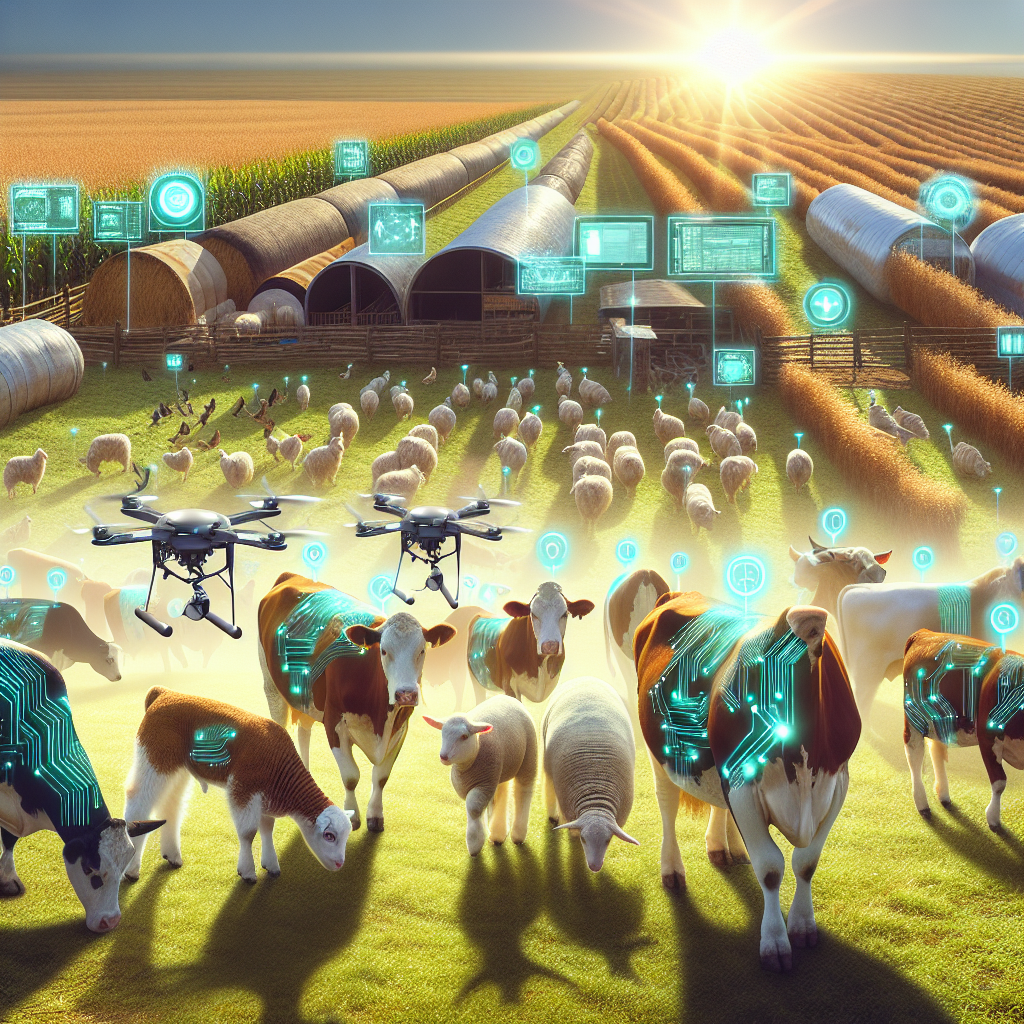Implementing AI for Livestock Tracking and Identification
Livestock tracking and identification are crucial aspects of managing and monitoring livestock populations. Traditional methods of tracking and identifying livestock, such as ear tags and branding, can be time-consuming and error-prone. With the advancements in artificial intelligence (AI) technology, new opportunities have emerged for implementing AI solutions for livestock tracking and identification.
AI can be used to automate the process of tracking and identifying individual animals within a herd. By utilizing AI algorithms, livestock managers can accurately and efficiently monitor the movements and behaviors of each animal, leading to improved management practices and increased productivity. In this article, we will explore the benefits of implementing AI for livestock tracking and identification, as well as some of the challenges that may arise.
Benefits of Implementing AI for Livestock Tracking and Identification
1. Improved Accuracy: AI algorithms can analyze large amounts of data to accurately track and identify individual animals within a herd. This can help prevent errors in identification and improve the overall accuracy of livestock management practices.
2. Increased Efficiency: By automating the process of tracking and identifying livestock, AI can help save time and resources for livestock managers. This can lead to increased productivity and reduced costs for managing livestock populations.
3. Real-time Monitoring: AI technology can provide real-time monitoring of livestock populations, allowing managers to quickly respond to any changes or issues that may arise. This can help improve the overall health and well-being of the animals.
4. Data-driven Decision Making: AI solutions can provide valuable insights and data analytics for livestock managers, enabling them to make more informed decisions about managing their herds. This can lead to improved efficiency and profitability for livestock operations.
Challenges of Implementing AI for Livestock Tracking and Identification
1. Cost: Implementing AI solutions for livestock tracking and identification can be costly, requiring investment in hardware, software, and training. Small-scale livestock operations may find it challenging to afford the upfront costs of implementing AI technology.
2. Data Privacy and Security: AI technology relies on collecting and analyzing large amounts of data, raising concerns about data privacy and security. Livestock managers must ensure that they have proper protocols in place to protect the privacy of their data and prevent unauthorized access.
3. Integration with Existing Systems: Integrating AI solutions with existing livestock management systems can be complex and time-consuming. Livestock managers may face challenges in ensuring that the AI technology works seamlessly with their current practices and workflows.
4. Technical Expertise: Implementing AI technology for livestock tracking and identification requires technical expertise and training. Livestock managers may need to invest in training their staff or hiring external experts to successfully implement and maintain AI solutions.
FAQs
Q: How does AI technology track and identify individual animals within a herd?
A: AI technology uses a combination of sensors, cameras, and machine learning algorithms to track and identify individual animals within a herd. Sensors and cameras collect data on the movements and behaviors of the animals, which is then analyzed by AI algorithms to identify each animal based on unique characteristics such as facial recognition or gait analysis.
Q: What are the benefits of using AI for livestock tracking and identification?
A: Some of the benefits of using AI for livestock tracking and identification include improved accuracy, increased efficiency, real-time monitoring, and data-driven decision making. AI technology can help livestock managers streamline their operations, improve productivity, and make more informed decisions about managing their herds.
Q: What are some of the challenges of implementing AI for livestock tracking and identification?
A: Some of the challenges of implementing AI for livestock tracking and identification include cost, data privacy and security, integration with existing systems, and technical expertise. Livestock managers may need to carefully consider these challenges and develop a plan to address them before implementing AI technology in their operations.
Q: How can livestock managers overcome the challenges of implementing AI for tracking and identification?
A: Livestock managers can overcome the challenges of implementing AI for tracking and identification by carefully assessing their needs and goals, developing a clear implementation plan, investing in training and technical expertise, and ensuring proper protocols for data privacy and security. By addressing these challenges proactively, livestock managers can successfully implement AI technology in their operations and reap the benefits of improved livestock management practices.

